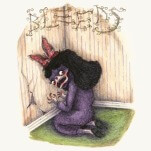Comic Relief with Jeff Smith of RASL and Bone
In Comic Relief, Paste chats with some of the most influential writers and artists in sequential art to discuss the work that inspired them as well as their own contributions. This week features indie icon Jeff Smith, the writer and artist behind the epic Bone saga and hardboiled sci-fi thriller RASL, which concluded earlier this month.
In early 2008, Smith pivoted from the whimsical, high-fantasy tone he’d established in his 55-issue Bone title to focus on an alcoholic, womanizing scientist named Rob who also happens to steal art from parallel dimensions. The wildly inventive, high concept RASL spun such influences as noir, sci-fi and south-west spiritualism into an addictive chronicle of science gone bad on a colossal scale. With final issue #15 out, Smith was happy to discuss his influences and approach for plotting his sprawling tale of a modern Icarus. He was also kind enough to lay a few hints about his next humorous project and give updates on the movie adaptations of Bone, currently tied to Peter Pan director P.J. Hogan, and RASL, which was optioned by Harry Potter and Sherlock Holmes producer Lionel Wigram last year. A massive Spoiler Alert for those who are currently reading or plan to read any of Smith’s work.
First Comic Written
Smith: It was the first issue of Bone.
Paste: Would your work on the Thorn strip you created for Ohio State’ student newspaper The Lantern count?
Smith: Well, I suppose it would. It was a test run on Bone. It had the same characters and setting, but it didn’t have a story. It was more just silly, slapstick fish-out-of-water stuff. Here are these crazy Bones who come from somewhere where they used to have computers and telephones, and now they’re stuck in a medieval fairy tale forest.
First Comic Read
Smith: Boy, that’s a good question. It was probably an Uncle Scrooge comic.
Paste: Was it one of Carl Barks’?
Smith: Oh sure, those were the ones that really got me.
Paste: I wonder if he still tours around all of the comic cons doing sketches like he used to.
Smith: You’re thinking of Don Rosa, the artist who was his successor.
-

-

-

-

-

-

-

-

-

-

-

-

-

-

-

-

-

-

-

-

-

-

-

-

-

-

-

-

-

-

-

-

-

-

-

-

-

-

-

-








































